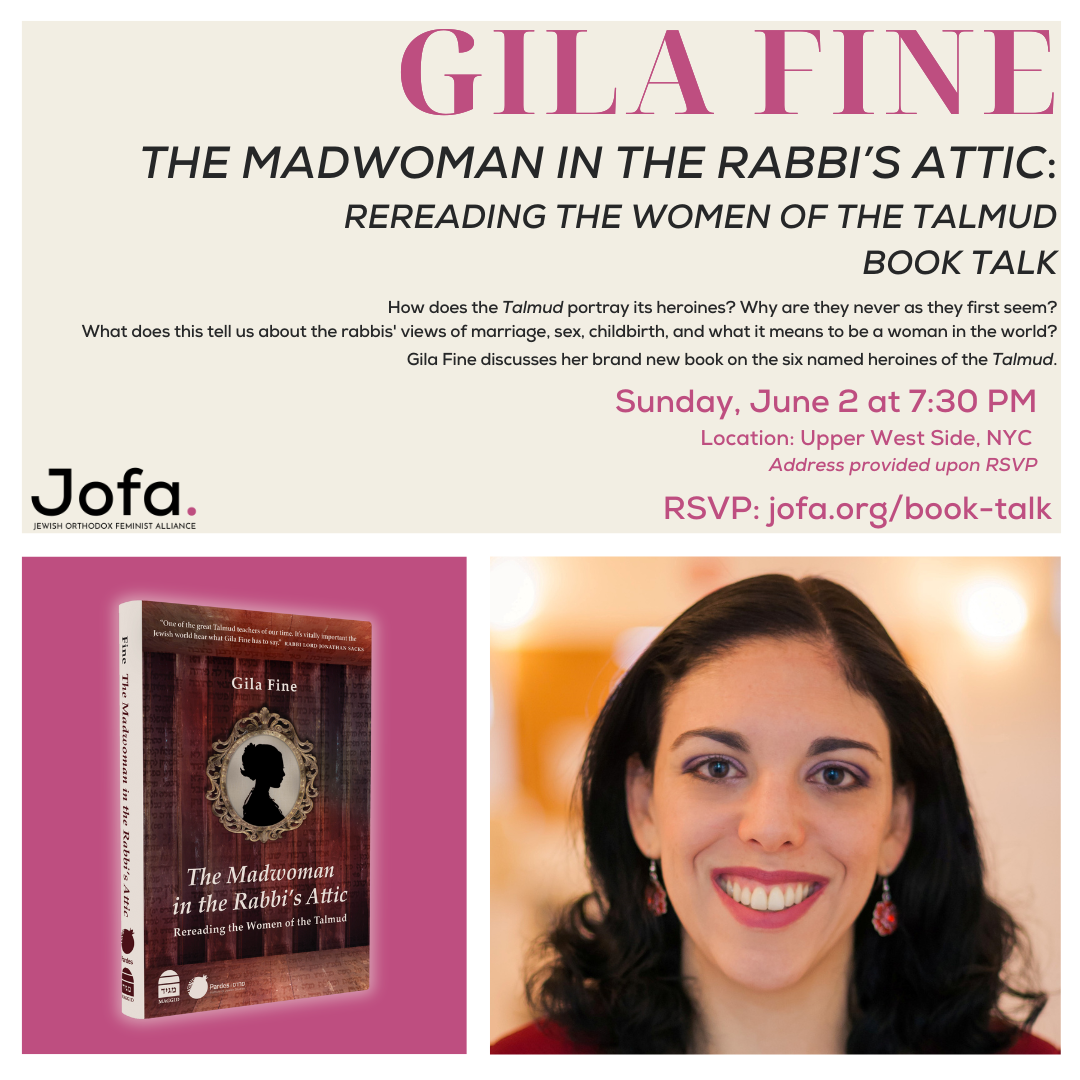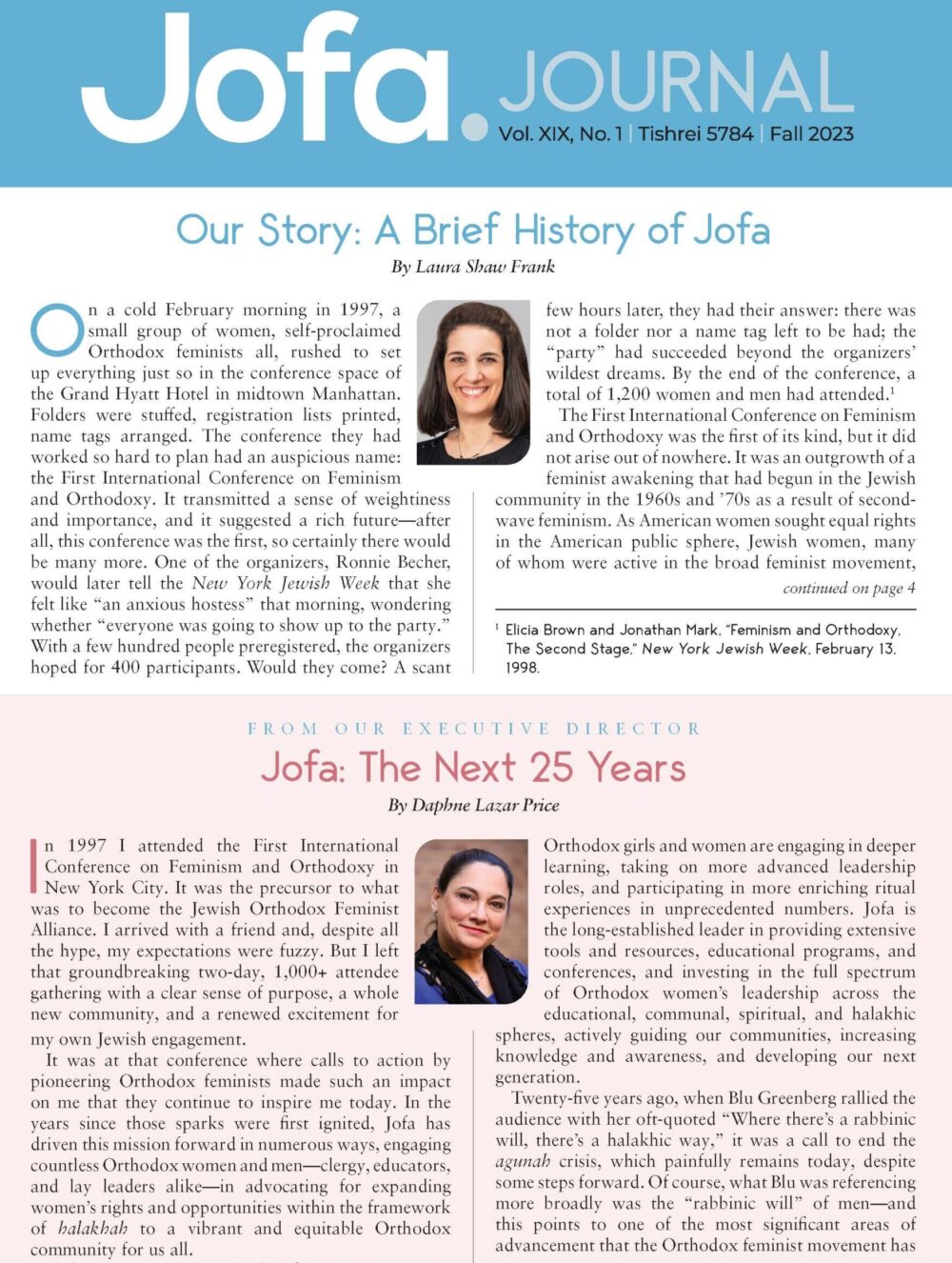Sarah Schenirer and the Bais Yaakov Movement: A Revolution in the Name of Tradition
By Naomi Seidman
The Littman Library of Jewish Civilization/ Liverpool University Press, 2019, $44.95
By Roselyn Bell
If one wanted to trace the beginnings of formal Jewish education for women in the modern era, one could do no better than to read Naomi Seidman’s Sarah Schenirer and the Bais Yaakov Movement. This volume is both a scholarly history of the movement and a translation of many of Schenirer’s writings into English for the first time. Seidman is the ideal person to write this book, as she is a recipient of a Bais Yaakov education; the daughter of Hillel Seidman, an early historian of the movement and contributor to its journal, and Sara Seidman, a teacher in a Bais Yaakov school; and she is herself a professor of Jewish history and culture at the University of Toronto. With this background, Seidman has the empathy to capture Sarah Schenirer’s voice and to admire her achievements, along with the academician’s tools to put Bais Yaakov into its historical context and to show its ties to other modernizing movements of the interwar years in Europe.
Seidman admires the immensity of the changes that Schenirer brought about for Jewish women, both institutionally—in creating a vast network of supplementary schools, full-day schools, and teacher training seminaries—and personally, in providing space within the schools and the Bnos youth movement to nourish girls spiritually and give them a measure of independence. From the first Bais Yaakov school that opened in Krakow in 1917, the movement grew to some 225 schools with 36,000 students by the time of Sarah Schenirer’s death in 1935. Together with the parallel boys’ schools under the aegis of Agudath Israel, it was the largest private Jewish school network in interwar Poland. Seidman dispels some of the hagiographic myths that have surrounded the story of Bais Yaakov’s founding. Schenirer was not simply a poor pious Polish seamstress, but rather a charismatic, intellectual, freedom-loving young woman whose inspiration for educating girls Jewishly came from a sermon she heard in Vienna, not Krakow.
In many ways, Sarah Schenirer was the right woman in the right place to take on a problem that everyone knew existed: the mismatch between the intensive Jewish education offered to boys in yeshivas and the totally secular education girls received in public schools or convent schools. This discrepancy created a “shiddukh crisis” of enormous proportions as well as leaving girls vulnerable to being caught up in the sex trafficking trade. The Polish Orthodox rabbis were aware of the problem, but couldn’t overcome their institutional turf battles to solve it. Along came Sarah Schenirer, eschewing politics, deferential to the rabbis on matters of halakhah, yet pursuing her vision of a grassroots movement to educate and inspire Jewish girls. Seidman suggests that because she was a woman, Schenirer could avoid entering into the Talmudic debate between Rabbi Eliezer and Ben Azzai about the propriety of teaching a daughter Torah and simply go after her goal.
Schenirer quickly won the endorsement of the Belzer Rebbe (Yissachar Dov Rokeach), opened her first school in 1917, received the financial support of the Agudah of Krakow in 1919, founded a teachers’ seminary in her apartment in 1923, brought the Bais Yaakov schools under the financial umbrella of Keren Hatorah (Agudath Israel’s educational foundation) in 1923, and launched the Bnos Agudath Israel youth movement in 1926. Seidman views this rapid institutionalization as in tension with the charismatic and revolutionary nature of Bais Yaakov’s founding. She notes that “the forces of charisma and institution, revolution and routine, centre and periphery, operated in tandem even after the institutionalization of the movement.”
A facet of the institutionalization was the creation of a publication to spread the religious perspectives of Bais Yaakov and to provide a platform for Jewish women to write. The Bais Yaakov Journal featured poetry and literature, exhortation and debate, written by men as well as women, by scholars of stature and by ordinary Bais Yaakov girls, sometimes using pseudonyms. Among the topics discussed was the “woman question.” Were the proponents of women’s rights correct that the rabbis were treating women as second-class citizens? Although the responses of the rabbis in the journal would not warm the hearts of contemporary feminists, the fact that the discourse was allowed, and even encouraged, shows that such fundamental issues were engaged.
Seidman is at her best when she applies her historian’s tools to show how Bais Yaakov’s culture was influenced by other Jewish movements and trends of the day. She traces in rich detail Bais Yaakov’s interactions with the German neo-Orthodoxy of Samson Raphael Hirsch, hasidism, socialism/communism, Zionism, Yiddishism, and feminism. From neo-Orthodoxy, Bais Yaakov borrowed modern educational methods such as a formal curriculum, pedagogical training of teachers, and textbooks. From hasidism came religious fervor expressed in singing and in pilgrimages to visit the rebbe—in this case, in visits to Schenirer’s home and seminary. From socialism came espousal of principles of social justice and a glorification of living in “happy depravation.” Zionism, with its Tarbut school system, was perhaps Bais Yaakov’s greatest competitor for students, yet some of Zionism’s ideals seeped into the Bais Yaakov culture, as, for example, in the urban kibbutz established by Bnos of Lodz to prepare young women to emigrate to the Land of Israel. Orthodox Yiddishism, championed by the charismatic ba’al teshuvah Nathan Birnbaum, sought to return the Jewish masses to traditional Jewish life through their “language of the heart,” Yiddish. In Bais Yaakov seminaries, where German was largely the language of instruction, returning to Yiddish was an ideological choice. Seidman points out that Schenirer herself embraced the cause before mastering the language; she was more linguistically at home in Polish and German than in Yiddish.
Bais Yaakov’s relationship to feminism was complex—and interesting—as it stood both outside and inside the movement. Its leaders made common cause with organizations fighting the sex trafficking of Jewish girls, and Bertha Pappenheim, the founder of the Judische Frauenband, visited the Krakow seminary. On the other hand, the Bais Yaakov Journal disparaged the pursuit of equal rights and suffrage as “foolish,” and championed a conservative ideal of “returning the Jewish home to its former glory.” Protests against male privilege were few and far between, yet when Agudah tried to exclude Bnos young women from receiving scarce certificates for passage to the Land of Israel, a Bais Yaakov writer invoked the precedent of the daughters of Zelophehad to fight it. And Sarah Schenirer, a single woman for most of her life (though she married twice), kept her birth name (for the most part) and often called her students her “sisters.”
This volume is packed with surprising and fascinating details that make the interwar era of Bais Yaakov come alive. All this rich culture and organizational flowering came to a tragic halt with the Holocaust. Bais Yaakov teachers taught in the ghettos and even in Auschwitz and Birkenau, but the institutional network of schools and seminaries, and most of the students,perished. After the war, Bais Yaakov reestablished itself in Israel and in New York, but with a more conservative and narrow base, geared to a more homogeneous and fully observant clientele. (Think more uniforms, fewer hikes in the woods.)
Seidman has performed an act of reclamation in assembling so many pieces of the picture of the Bais Yaakov culture that flourished for a brief while, and in translating to English Sarah Schenirer’s diary and other writings. We can look back upon this brief “revolution in the name of tradition” and find inspiration, as well as cautionary tales, for our own pursuit of women’s Torah education.

LAST CHANCE: RSVP for Book Talk with Gila Fine, New York City, Sunday Evening, June 2
On Sunday, June 2, at 7:30PM, on the Upper West Side of Manhattan, Gila Fine will discuss her brand new book, “The Madwoman in the










